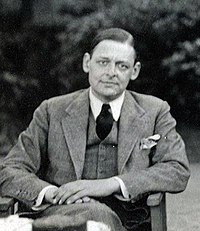|
|
| Line 21: |
Line 21: |
| | colspan="3" | {{Big|W. H. Auden}} | | | colspan="3" | {{Big|W. H. Auden}} |
| |- style="vertical-align: top;" | | |- style="vertical-align: top;" |
| | colspan="2" |{{bulleted list|“[[Musée des Beaux Arts]]”|“[[The More Loving One]]”}} | | | colspan="2" |{{bulleted list|“[[Musée des Beaux Arts]]”|“[[The More Loving One]]”|“[[O What Is That Sound]]”}} |
| | [[File:W. H. Auden (1956 press photo).jpg|thumb|200px]] | | | [[File:W. H. Auden (1956 press photo).jpg|thumb|200px]] |
| |- | | |- |
| Line 49: |
Line 49: |
| | colspan="2" |{{bulleted list|“[[June 17, 2020|Let America Be America Again]]”}} | | | colspan="2" |{{bulleted list|“[[June 17, 2020|Let America Be America Again]]”}} |
| | [[File:LangstonHughes crop.jpg|thumb|200px]] | | | [[File:LangstonHughes crop.jpg|thumb|200px]] |
| |-
| |
| | colspan="3" | {{Line}}
| |
| |- style="font-align: left;"
| |
| | colspan="3" | {{Big|Franz Kafka}}
| |
| |- style="vertical-align: top;"
| |
| | colspan="2" |{{bulleted list|“[[February 4, 1994|Before the Law]]”}}
| |
| | [[File:Kafka.jpg|thumb|200px]]
| |
| |- | | |- |
| | colspan="3" | {{Line}} | | | colspan="3" | {{Line}} |
Latest revision as of 09:48, 4 June 2023
Modernist poetry refers to a wide-ranging cultural movement that emerged in the early 20th century and is characterized by a radical break with traditional forms and values.
General Characteristics
|
|
Some of the general characteristics of modernist poetry include:
- Experimentation with form: Modernist poets often experimented with new forms of poetry, including free verse, fragmented or disjointed lines, and unconventional structures.
- Use of symbolism and allusion: Modernist poets frequently used symbols and allusions to represent complex ideas or emotions.
- Emphasis on individual experience: Modernist poets often focused on the individual experience rather than the collective or universal.
- Critique of society: Many modernist poets criticized the social and cultural norms of their time, often using their poetry as a means of social and political commentary.
- Ambiguity and fragmentation: Modernist poets often employed ambiguity and fragmentation to reflect the fragmented nature of modern life and thought.
- Stream-of-consciousness: Modernist poets sometimes used the stream-of-consciousness technique to explore the inner workings of the mind and to depict the flow of thoughts and emotions.
- Rejection of traditional literary conventions: Modernist poets rejected traditional literary conventions such as rhyme, meter, and narrative structure.
- Interest in multiple perspectives: Modernist poets often explored multiple perspectives and points of view, including those of marginalized and minority groups.
These characteristics are not exhaustive, but they provide a general sense of the key features of modernist poetry.
|

| W. H. Auden
|
|
|
|
|
| Hart Crane
|
|
|
|
| T. S. Eliot
|
|
|
|
|
| Robert Frost
|
|
|
|
| Langston Hughes
|
|
|
|
|
| Dylan Thomas
|
|
|
|
| William Butler Yeats
|
|
|
|



